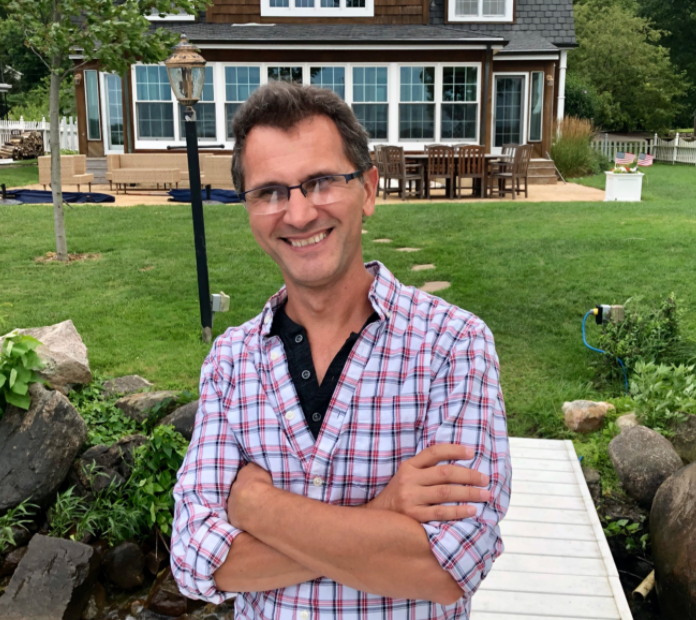Photography / Provided
The fact that 2,000 Indiana sites have been listed on the National Register of Historic Places since its inception in 1966 will likely come as a surprise to many Lakes-area readers. But the fact that one Marshall County resident is responsible for nearly 200 of them — and number 200 is well on its way — might be the biggest surprise of all.
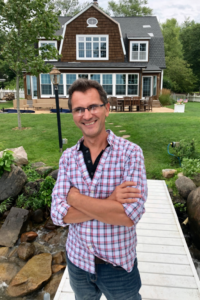 Kurt Garner’s training is technically in architecture, but he’s been primarily an architectural historian. For some years now, assisting property owners in researching the history and significance of their properties — as well as the process of navigating the ins and outs of placing a property on the National Register — has been his primary stock and trade for many years as well.
Kurt Garner’s training is technically in architecture, but he’s been primarily an architectural historian. For some years now, assisting property owners in researching the history and significance of their properties — as well as the process of navigating the ins and outs of placing a property on the National Register — has been his primary stock and trade for many years as well.
That work includes more than 30 properties in the Lakes readership area, including commercial and residential districts in Argos, Bourbon, Bremen and Plymouth, as well as the Chief Menominee Monument, which was one of his most rewarding nominations.
Garner’s passion for the intersection of place and history comes naturally enough. He notes he had family in Marshall County before it even became a county, and ten generations of his family have lived in the area.
He also grew up with community as part of his life’s blood: his family-owned Garner’s Truck Stop outside of LaPaz, which “was a big part of what made me who I am,” he says. “I think the appreciation for this kind of multigenerational planting of yourself probably grew out of that. Then along with that that, I’m kind of a road-trip guy, so I think feeling a part of the community, as odd as it sounds being in that setting, allowed me to feel like part of a community on a much larger platform.”
And when he learned of part of his family who briefly lived in Culver during the 1930s-1940s, during which time his great uncle gave his life during the Battle of the Bulge at just 19 years old, Garner provided a program on the heart-wrenching story at the Culver church in which services were held during Christmas, 2019, at the 75th anniversary of his death.
Garner’s interest in history also goes back almost further than he can recall, though memories dot his mental landscape like pulling a cardboard box of photos from his grandmother’s table and seeing photos of family members to whom he was connection…or being consumed in the fourth grade with reading Indiana history to the point that he read ahead in the school textbook.
Garner’s step-grandfather was Hoosier legend, physician and former Governor (and Secretary of Health and Human Services under President Reagan) Otis Bowen.
“I saw public service modeled through him,” says Garner. “The importance of making your community better. And I couldn’t have asked for a better model.”
Examples of Garner’s commitment to community service are too many to mention but include his role as a founding member of Habitat for Humanity of Marshall County in 1996 and founding and leading the Wythougan Valley Preservation Council in 1999. He also has played key roles in Indiana Landmarks, the Marshall County Museum expansion/Historic Crossroads Center, Plymouth Greenways Development, Plymouth Plan Commission, Plymouth Urban Forestry Committee, is a regularly featured speaker at the Marshall County Historical Society Brown Bag Luncheons, and served as Marshall County Commissioner, to name a few.
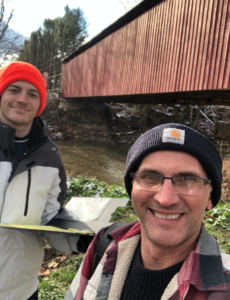
And Garner, who began doing architectural design work as early as middle school, differs from many small-town Hoosiers in that he opted to return to his hometown of Plymouth after graduating from college (he earned degrees from Bethel College and Andrews University).
“Whether you’re talking about being a Hoosier or from Marshall County, when you have an appreciation for your history like I do, and family roots, it’s hard to walk away from the blood, sweat, and tears that have made your family story one with the soil of this place. For me it’s never been an option to not be here… . I love Indiana, and that’s underlying to everything.”
After graduating, Garner went to work in Plymouth with Brent Martin, and his very first project was, in many ways, a template for the work that would become his lifelong passion. He was able to design a house to replace a lake cottage that had been in the Culver-area Sturman family for generations. It was, he notes, a matter of “reaching into their past and pulling it forward.”
Work soon followed helping restore the historic facades of downtown Plymouth’s buildings, and creating a State Historic Byway around the earliest pathway to the Lakes area from the south, the Michigan Road (Garner notes that builder of the house he and his wife, Christine, who serves as Executive Director of the Marshall County Neighborhood Center in Plymouth, live in today, came there on the Michigan Road). Garner has been instrumental in developing the last three of Indiana’s eight scenic byways.
Garner’s work often initiates preservation efforts since National Register designation opens the doors for several funding sources including grants and tax credits. He finds it rewarding to watch nominations spur on restoration efforts, sometimes beyond a single building to neighborhoods and downtowns. The Vonnegut cottage on Lake Maxinkuckee’s National Register-listed East Shore District was one such tax credit project Garner had a hand in.
“The most rewarding work,” he says, “whether it be National Register nominations, byway development, or preservation and design, has been introducing people to their past, to let them know that their story, regardless of how insignificant they think it is, matters.”
One recent nomination for an institution that was used as an Indian Training School in the 1880s prompted a lot of conversation with administration who said it was painful to read.
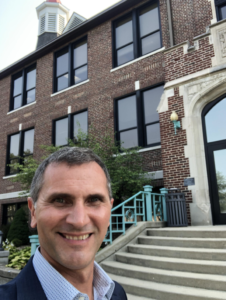 “But that has to be part of it: confronting a history that may be difficult to acknowledge will broaden our understanding and appreciation for others,” he says.
“But that has to be part of it: confronting a history that may be difficult to acknowledge will broaden our understanding and appreciation for others,” he says.
For Garner, architecture holds a unique place in immersing people in the history of their community and family.
“It’s the only thing you can go in and actually experience, unlike writings or other medium,” he says. “So architectural preservation reaches beyond that. You can experience what people before us could experience.
“Buildings are repositories of human civilization,” Garner says. “They’re the embodiment of generations of aspirations. So, when buildings pass from the landscape, they take with them what the grave robs from mortals. But unlike the Grim Reaper; it’s us.”
Garner’s first National Register nomination was in downtown Plymouth, and by 2008 he had accumulated five in all, including more Plymouth properties as well as Rochester.
Gradually the geographic scope of his restoration and National Register projects enlarged to the point that, within the past decade, Garner has found himself traveling across virtually every portion of the Hoosier State and to date has worked in more than two-thirds of its counties.
“Traveling the backroads is part of my background, and there’s the joy of discovering something you didn’t know was there,” he says. “When something presents itself on a road you’ve never been on, it’s like an ‘aha moment;’ it’s almost like a mystery or a discovery.”
And as his 200th National Register nomination approaches (one he plans to donate his time for), Garner has been surprised to learn that he’s stewarded perhaps four times more such nominations than anyone in Indiana, and likely more than anyone in the entire US.
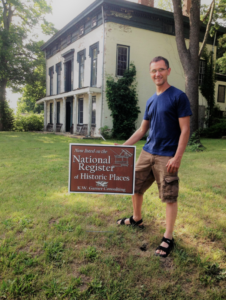
Included in the many projects he’s undertaken over the years are 4,831 major resources which include 22 bridges, 40 public buildings, 17 parks or cemeteries, and 108 churches.
Kurt Garner blogs regularly his thoughts on history and community, among other topics, at kwgarner.com, where he also posts frequently about his latest preservation and National Register projects.
However, he knows some people aren’t going to care about preservation of historic properties, and, he says, that’s OK. “(Preservation and architectural history are) part of our national story and identity being Hoosiers,” he says. “They provide that kind of background to let us know what to reach for.
“When you think about all the accomplishments and the struggle and toil and success and celebration, how do we respect that in a way that allows us to build on it and not knock it down or build something that doesn’t fit in its place?” he says. “We also have a story to tell, ourselves, as we move into the future. You interpret the past in a way that allows you to move forward, and it’s OK to leave your mark.”


